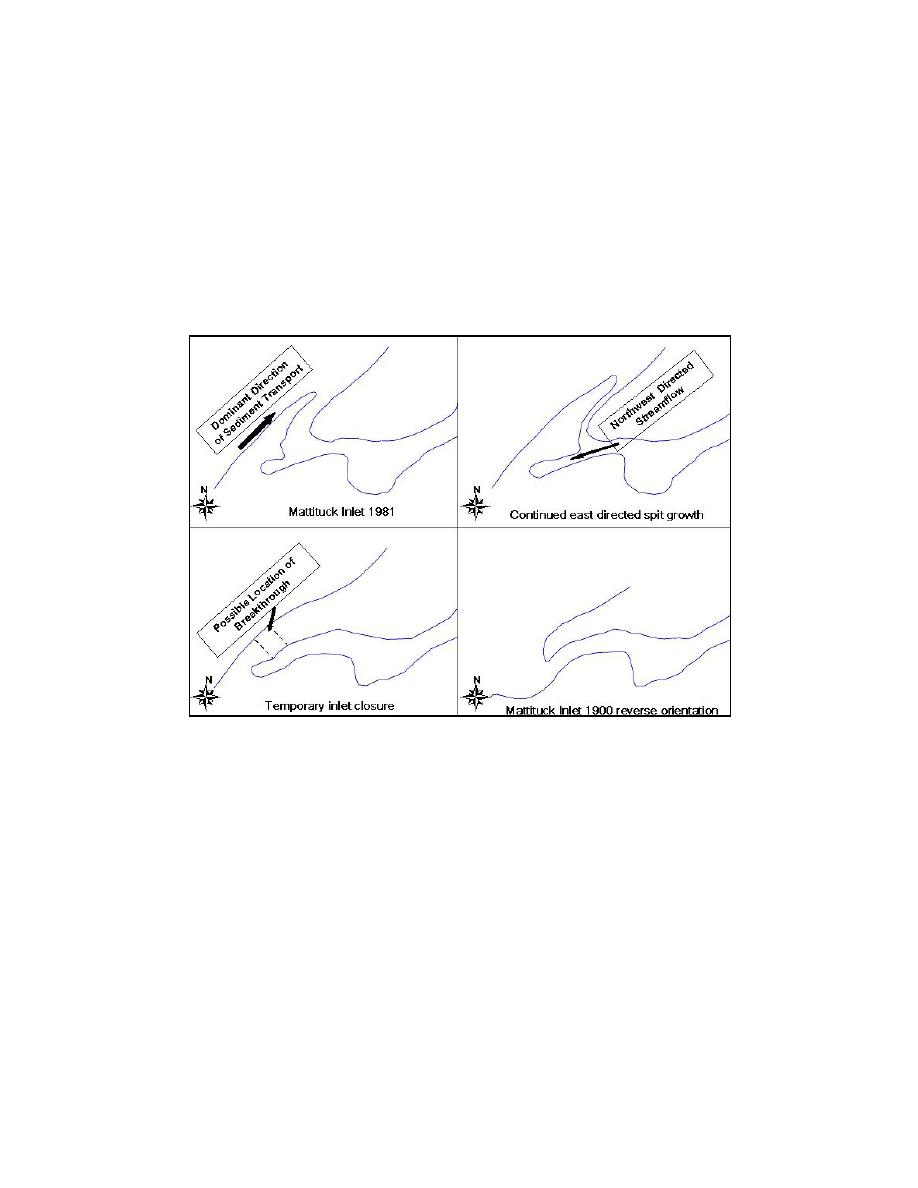
New York District (1969) documents that between the 1830s and 1880s, the
entrance to Mattituck Inlet migrated 600 ft to the west, and the spit length was
about 1,000 ft. It is probable that this reported configuration is the result of
lengthening of the spit to the east, making the inlet hydraulically inefficient,
leading to a breach to the west, closer to the inland source channel, and the
present day entrance. Observed after the breach, the channel would have
appeared to migrate west. Figure 4-12 illustrates a hypothesized sequence (a to
d) of spit growth, closure, and reopening that would yield the observed change in
orientation. The sequence resembles one of a number of proposed models
described by FitzGerald et al. (2000).
Figure 4-12. Mattituck Inlet, 1891-1900, hypothesized reorientation
The creation of the Federal navigation channel and construction of the jetties
was approved in the Rivers and Harbor Act of 3 June 1896, and work
commenced in 1901. Figure 4-13 shows the morphology of Mattituck Inlet at
this time. It is assumed that the inlet opening shown here was the result of an
initial partial dredging and that the natural opening to the west was filled in.
The morphology of Mattituck Inlet for 1905 and 1907 is illustrated in
Figure 4-14. Construction of the east jetty was completed in 1906, and a partial
dredging for improvement took place in 1907 (U.S. Engineers Office, First
District 1928). It is not known whether the morphology of 1907 shown in
Figure 4-14 was that prior to or after the partial dredging of 1907. It is believed
that the morphology illustrated was prior to the initial dredging of 1907, because
shoaling is observed along the inside of the west jetty and near the base of the
east jetty.
120
Chapter 4 Morphology Change, and Channel Shoaling and Migration



 Previous Page
Previous Page
